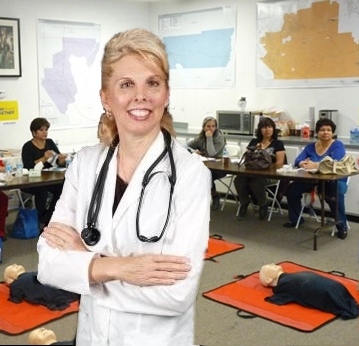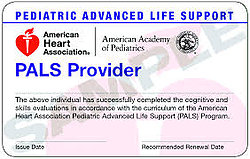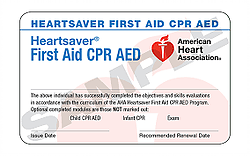 Teaching American Heart Association CPR Courses!
Teaching American Heart Association CPR Courses!
Welcome to our CPR and Health Coaching Training center. We teach American Heart Association Courses in our home office located in the Brandon/Valrico area, Dover, FL 33527.
If you are looking for CPR Certification or Re-certification, you have come to the right place! We are here to serve you and answer any questions you may have.
GET YOUR American Heart Association Course Completion CARD on the same day of training UPON SUCCESSFUL COMPLETION ! We’ve trained 1000’s of medical health care professionals, paramedics and nursing students for their hospital CPR certifications.





- We do not cancel your class due to low student count
CPR Course Listing
- ACLS Initial, Renewal, Skills Session
- PALS Initial, Renewal, Skills Session
- BLS for Healthcare Providers Initial, Renewal, Skills Session
- Heartsaver CPR & AED
- Heartsaver CPR AED & First Aid
- Family & Friends Course.
CPR Course Overview
In the training classes, you will learn in a comfortable environment to improve your learning experience with real-life experiences. All Courses we teach include rolling up your sleeves and practicing your skills, discussion and video, utilizing the American Heart Association student manuals.
You will gain confidence in your CPR skills so that you can apply your skill set to save a life.
Upon successful completion of the ACLS, PALS, BLS for Heathcare Providers, Heartsaver First Aid & CPR AED, Heartsaver CPR & AED, and Heartsaver First Aid course you will receive your certification card from American Heart Association that is valid for 2 years.
Be sure to contact us to schedule your course if you do not see it on our calendar.
Anyone Can Learn It
Though many medical professionals use CPR professionally, training is easy and anyone can do it. This may make you feel more empowered to help in an emergency. A common factor among survivors is that a bystander like you performed CPR until medical professionals arrived.
Performing chest compressions is more important than mouth-to-mouth. Mouth-to-mouth was to be considered an integral part of CPR. In 2010, the American Heart Association released new guidelines that do not recommend mouth-to-mouth when performing CPR. Getting blood to the brain is the most important part of CPR and taking time out to give breaths reduces blood pressure immediately back to zero. With continued compressions, the brain gets the blood that it needs.
CPR Can Be Exhausting
Physically demanding over time and you may find yourself getting tired, depending on how long it takes to get medical professionals to the scene. If there is another person available to help, switch off every couple of minutes.
You won’t restart the heart. The purpose of CPR isn’t to restart a person’s heart (although sometimes you will), so don’t expect them to suddenly recover. CPR is done to keep blood flowing to the brain and other organs until an AED or medical professionals arrive.
An AED can be used by anybody. Turn on the AED and it talks to you, telling you exactly what to do. Its purpose is to deliver an electric shock to the heart and the sooner it is used, the greater the chance of restarting the heart. It automatically analyzes the heart first and will only deliver a shock when needed. AEDs are in many public places and, if not available, are carried on most emergency vehicles.
Cardiac Arrest
An electrical malfunction in the heart that causes an irregular heartbeat (arrhythmia) and disrupts the flow of blood to the brain, lungs and other organs – is a leading cause of death. Each year, more than 350,000 out-of-hospital cardiac arrests occur in the United States.
CPR is likely to be effective only if commenced within 6 minutes after the blood flow stops[92] because permanent brain cell damage occurs when fresh blood infuses the cells after that time, since the cells of the brain become dormant in as little as 4–6 minutes in an oxygen deprived environment and, therefore, cannot survive the reintroduction of oxygen in a traditional resuscitation. It is believed that there is a higher chance that CPR will be performed if the bystander is told to perform only the chest compression element of the resuscitation.[39][91]
When a person has a cardiac arrest, survival depends on immediately getting CPR from someone nearby. Almost 90 percent of people who suffer out-of-hospital cardiac arrests die. CPR, especially if performed in the first few minutes of cardiac arrest, can double or triple a person’s chance of survival.
